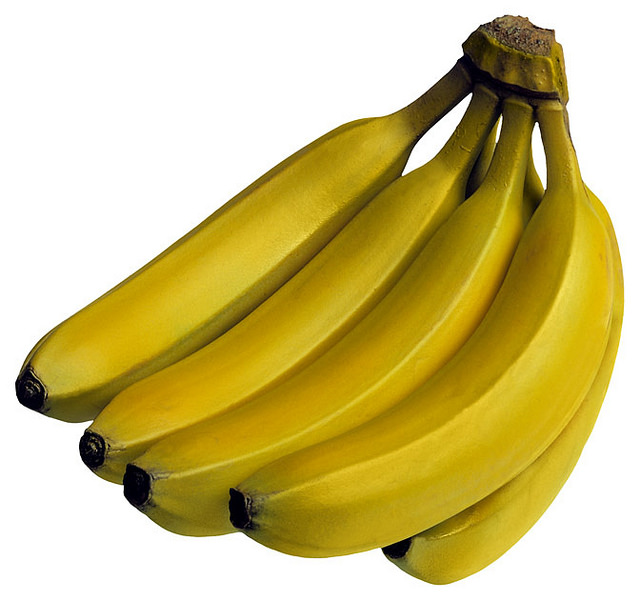How sustainable is the banana industry?
Four of the Voluntary Sustainability Standards (VSS) used in the banana industry were covered in an Intracen/UN survey – Fairtrade International, Organic, GlobalGAP and Rainforest Alliance/SAN – certifying banana production in 10 major banana-producing countries.
GlobalGAP had the largest VSS-certified banana area in 2013, whereas the area with most growth (2008–2013) was seen for Fairtrade International. Fairtrade bananas are cultivated by 11,600 small-scale farmers and 10,100 plantation workers, who are represented in 123 producer organisations. Fairtrade International certified 33,000 hectares of bananas in 2013, meaning 5% of the global banana export area. More than 620,000 metric tons were produced. The countries with the largest areas were: the Dominican Republic (11,416 hectares), Ecuador (6,401 hectares), Peru (5,286 hectares), Colombia (4,644 hectares) and Ghana (1,367 hectares). Together, these five countries represented 88% of the total Fairtrade International banana area. This area has increased by almost 60% since 2008.Organic bananas represented almost 8% of global banana exports, with more than 48,000 hectares (estimated harvested area). An estimated 850,000 metric tons were produced in 2013.The Dominican Republic (22,000 hectares), Ecuador (10,400 hectares), the Philippines (6,000 hectares), Peru (5,500 hectares) and Mozambique (1,700 hectares) had the largest organic banana areas, together representing almost 95% of the total organic banana area. Since 2008, the organic banana area has increased by almost 18%. About half of these organic bananas are also Fairtrade.
Since 2002 the EurepGap certification was import by the major retailers. In 2014 more than 223,000 hectares of bananas were GlobalGAP-certified, meaning 31% of global banana exports. The largest areas were in Ecuador (64,089 hectares), Colombia (43,690 hectares), Costa Rica (28,397 hectares), Guatemala (25,871 hectares) and the Dominican Republic (14,896 hectares), taking up almost 84% of the total GLOBALGAP banana area, which has declined by 6% since 2012.
By choosing Rainforest Alliance Certified™ products, consumers can support environmental, social and economic sustainability. Rainforest Alliance/SAN certification covers more than 109,000 hectares of banana land. Almost 3 million metric tons of Rainforest Alliance/ SAN bananas were reported in 2014 on 1,600 farms, accounting for 15% of global banana export volume. Six countries represented 90% of the total Rainforest Alliance/SAN banana area: Costa Rica (22,475 hectares), Guatemala (26,126 hectares), Colombia (14,731 hectares), Honduras (9,560 hectares) and Panama (5,618 hectares). This area has increased by 28% since 2008. These different kinds of certifications identify which produce is organic, Fairtrade, etc. These allow major retailers to meet the demand for sustainable produce. The issue with this is that the retailers are not necessarily willing to pay a premium for it. The advantage, however, is that the growers/exporters gain access to retail stores in the EU. The table below shows that countries with a large area of certified land increased their market share over the last quarter – particularly when the produce carries a Fairtrade, Organic or Rainforest Alliance Certified logo. Unfortunately, there is no independent agency that verifies whether the claims carried by these products are true.




